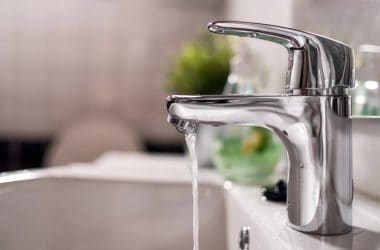Low water pressure can turn a simple shower or garden task into an exercise in patience, and it often signals an underlying problem that wants attention. Finding the root cause takes a mix of quick checks and methodical tracing along the pipes, fixtures, and appliances that make water flow.
Many issues are plain to see, while others hide in plain sight inside walls or below slabs; both types can reduce flow and raise bills. Below are common causes, explained in practical terms so you can narrow down what’s going on and decide what to do next.
Municipal supply problems
At times the problem starts upstream where the municipal supply or private well struggles to meet demand, and pressure dips across a neighborhood. Work crews, hydrant flushing, or main breaks can cut pressure for hours, and a quick call to the water utility often clears things up.
Temporary pressure reductions may be visible at multiple homes on your street, which helps rule out an internal plumbing issue. If the utility confirms a supply-side event but pressure lingers low after repairs, the fault could also live inside your house plumbing.
Partially closed main shut-off valve
A main shut-off valve that isn’t fully open will choke flow and create an odd mix of usable pressure and weak taps. These valves can be sticky from disuse, or they may have been turned a notch during recent work and not fully reopened.
The fix can be as simple as opening the valve fully, but beware of sudden surges or leaks once flow is restored; move slowly and listen for drips. If the valve won’t move or leaks when adjusted, swapping it out is a job for a plumber.
Faulty pressure regulator (PRV)
Homes fed by systems with variable pressure rely on a pressure regulator to keep flow steady, and a bad regulator can make everything feel sluggish. Symptoms include different pressure patterns between upper and lower floors, or pressure that changes without warning when other fixtures run.
Replacing or adjusting a PRV is often straightforward but requires basic tools and a pressure gauge to set correctly. A pro can test and replace the unit, getting readings back into the sweet spot for your house.
Mineral buildup and pipe scale
Hard water brings dissolved minerals that slowly crystallize inside pipes, narrowing the passage and reducing flow much like a clogged straw. Over years, calcium and magnesium deposits can severely cut flow at fixtures or across long runs, and you might notice rusty or discolored bits when a line is cleared.
Addressing scale ranges from cleaning aerators and showerheads to more involved treatments like pipe replacement or whole-home water softening. Small fixes can buy time, while heavy scale often needs a systemic approach to restore full flow.
Corroded or aging pipes
Metal pipes degrade over decades, and corrosion not only restricts flow but can flake off and sediment downstream, creating new clogs. Older galvanized steel and iron lines are especially prone to interior corrosion and loss of capacity, while copper can suffer pinhole leaks that quietly sap pressure.
When corrosion is the issue, targeted repairs may offer temporary relief but replacing old mains with modern materials tends to be the lasting solution.
If your home’s plumbing shows these signs of wear, it’s wise to get help from a local plumber for Puchong homes who can assess the damage and recommend durable upgrades. A plumber can inspect with cameras to reveal hidden corrosion without tearing up walls.
Hidden leaks in the system
A leak steals water and pressure before the flow reaches faucets, and small leaks under slabs or behind walls are notorious for producing gradual pressure loss. Look for signs like unexplained wet spots, high bills, or water sounds when everything is off; sometimes the evidence is subtle.
Leak detection tools and professionals can map the issue and pinpoint the failure without invasive work. Fixing a leak restores pressure and stops waste, so catching it early saves money.
Peak demand times
Neighborhood demand peaks, such as morning and evening routines, can temporarily lower pressure when many people draw water simultaneously. This communal effect is most obvious in apartment buildings and dense suburbs, where shared mains feed many homes at once.
Pressure dips that follow a daily pattern often indicate supply constraints rather than house plumbing defects. If the timing matches busy windows, options include storage tanks, booster pumps, or talking with the utility about capacity.
Clogged aerators and showerheads

Small, cheap parts like faucet aerators and showerhead screens collect debris and scale that limit spray and flow, and they’re often the culprit when only one fixture feels weak. Unscrewing and rinsing these parts usually takes minutes and can restore a solid stream right away, a true easy win.
Keep a small jar of vinegar handy for soaking mineral-encrusted parts to speed cleanup. Replacing worn or clogged fixtures also refreshes the flow and can improve user comfort.
Water heater sediment and bypasses
Sediment builds in water heaters over years, especially in tank systems, and can block outlet lines or reduce hot-water pressure compared with cold. Signs include lower hot flow, banging sounds, or temperature swings when taps are open, which point to a need for flushing or maintenance.
Flushing a tank or servicing a tankless unit can restore balanced hot flow, and proper maintenance keeps pressure even across temperatures. If water heater valves or bypasses are mis-set, those controls may need adjusting to normalize flows.
Poorly sized or faulty piping layout
Plumbing that used undersized pipe runs, excessive bends, or unnecessary restrictions will struggle to deliver steady pressure throughout a house. Modern codes and practices favor larger mains and logical routing to avoid head losses that sap flow, so older builds can lag behind current standards.
Reworking sections of the system or adding parallel runs can bring the house back into harmony, though such upgrades are an investment. A plan that targets the worst bottlenecks often gives the biggest improvement for the cost.
Frozen or partially frozen pipes
In cold months, exposed lines can partially freeze and choke flow long before a full ice block stops it entirely, producing draggy, sputtering taps. Early signs include cold spots on the line or a sudden pressure drop when outdoor temps plunge overnight.
Thawing safely with gentle heat and insulation upgrades helps prevent repeat incidents, and careful attention to outdoor spigots pays off. Avoid open flames and call pros if freezing occurs inside walls or near structural elements.
Faulty shut-off valves at fixtures
Angle stops and under-sink shut-off valves can stick or fail, restricting flow to a single fixture while the rest of the house presumes all is well. Often the symptom is isolated low pressure at one sink or toilet while others are normal, which points the finger right at the local valve or supply line.
Replacing a stiff valve is inexpensive and restores normal function, and it’s one of those small repairs that yields a big bang for the buck. Leave corroded valve swaps to someone comfortable with soldering or compression fittings.
Shared lines with irrigation and appliances
Irrigation systems, washing machines, and other high-demand devices that run intermittently can sap pressure when they operate, leaving taps starved in other parts of the house. Timed irrigation that overlaps with morning showers is a classic scheduling clash that affects flow when you least want it.
Segregating supply lines, adding pressure-rated manifolds, or using pressure-assisted fixtures tames the problem and keeps everyone happy. Often a little planning or simple upgrades smooths out these daily peaks.










